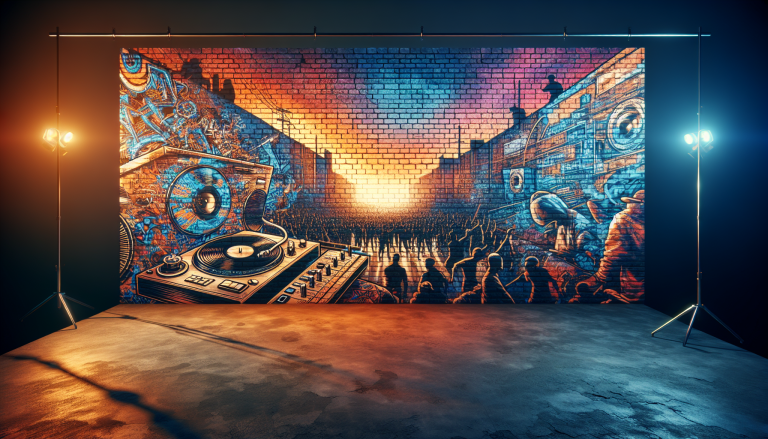The Sonic Revolution: How Hip-Hop Transformed American Music Forever
From Street Corners to Global Phenomenon
Hip-hop isn’t just a music genre—it’s a cultural earthquake that reshaped the landscape of American music and global popular culture. Born in the gritty streets of the Bronx during the early 1970s, this revolutionary art form emerged from the creativity and resilience of African American and Latino youth who transformed urban struggle into a powerful form of musical expression.
The roots of hip-hop trace back to block parties in New York City, where pioneering DJs like Kool Herc discovered a groundbreaking technique. By extending instrumental breaks in funk and soul records, Herc created a new sonic playground where dancers—soon to be known as “break-dancers”—could showcase incredible moves. This moment wasn’t just musical innovation; it was a radical reimagining of how music could be created and experienced.
The Four Pillars of Hip-Hop Culture
Hip-hop quickly evolved beyond music, developing four fundamental elements: MCing (rapping), DJing, breakdancing, and graffiti art. Each element represented a different form of creative rebellion, a way for marginalized communities to claim space, tell their stories, and challenge existing power structures.
Rapping, in particular, became a potent form of storytelling. Artists like Grandmaster Flash and the Furious Five’s “The Message” in 1982 transformed hip-hop from party music into a powerful social commentary. The track brutally exposed urban poverty, systemic racism, and the daily challenges faced by inner-city residents—a narrative rarely heard in mainstream media.
Revolutionary Artists and Groundbreaking Moments

The late 1980s and early 1990s saw hip-hop’s golden age, with groups like Run-DMC, Public Enemy, and N.W.A breaking unprecedented ground. These artists weren’t just musicians; they were cultural architects reshaping American dialogue about race, politics, and social justice.
Public Enemy’s Chuck D famously described rap as “Black America’s CNN”—a critical platform for communicating experiences often ignored by traditional media. Their album “It Takes a Nation of Millions to Hold Us Back” remains a landmark of political hip-hop, blending revolutionary rhetoric with complex musical arrangements.
As the genre evolved, artists like Tupac Shakur and The Notorious B.I.G. brought unprecedented lyrical complexity and emotional depth. Their music transcended simple entertainment, offering nuanced portraits of urban life that were simultaneously tragic, hopeful, and deeply human.
Global Impact and Musical Innovation
Hip-hop’s influence extended far beyond its original contexts. What began as a localized cultural expression in the Bronx became a global language of youth resistance and creativity. From Tokyo to São Paulo, young people adopted hip-hop’s musical and cultural practices, creating unique local variations while maintaining the genre’s core spirit of innovation and rebellion.
Musically, hip-hop revolutionized sampling technology, transforming how music could be created. Producers like DJ Premier and RZA didn’t just play instruments—they reconstructed entire sonic landscapes, turning fragments of old records into entirely new musical experiences.
The genre also pioneered new production techniques that would influence virtually every contemporary music style. Drum machines, digital sampling, and complex rhythmic patterns developed in hip-hop studios became standard across pop, rock, and electronic music.
Commercial Success and Cultural Complexity
By the 2000s, hip-hop had become a multi-billion dollar industry. Artists like Jay-Z, Kanye West, and Drake weren’t just musicians but global brands, demonstrating the genre’s incredible economic potential. Yet this commercial success brought complex conversations about authenticity, cultural appropriation, and the balance between artistic integrity and mainstream appeal.
Contemporary hip-hop continues to evolve, reflecting ongoing social transformations. Artists like Kendrick Lamar have elevated the genre to new levels of artistic and political expression, winning Pulitzer Prizes and challenging listeners to engage with complex social narratives.
A Living, Breathing Cultural Force
More than fifty years after its inception, hip-hop remains a dynamic, revolutionary art form. It continues to challenge, inspire, and reimagine what music can be and do. From its humble beginnings at Bronx block parties to global stages, hip-hop represents more than a genre—it’s a testament to human creativity, resilience, and the power of cultural expression.
As legendary rapper Nas once said, “Hip-hop is the language of the streets.” But it’s also so much more: a mirror reflecting society’s deepest hopes, struggles, and transformative potential.